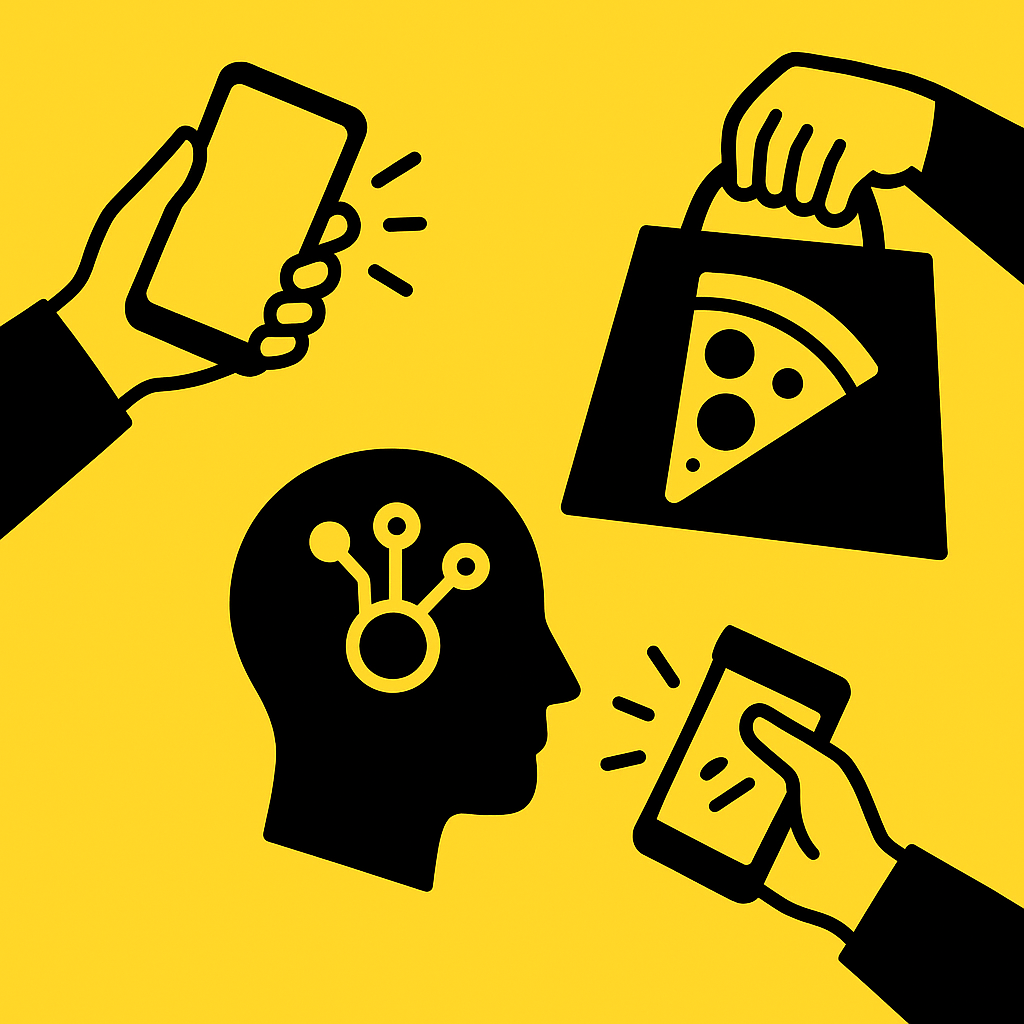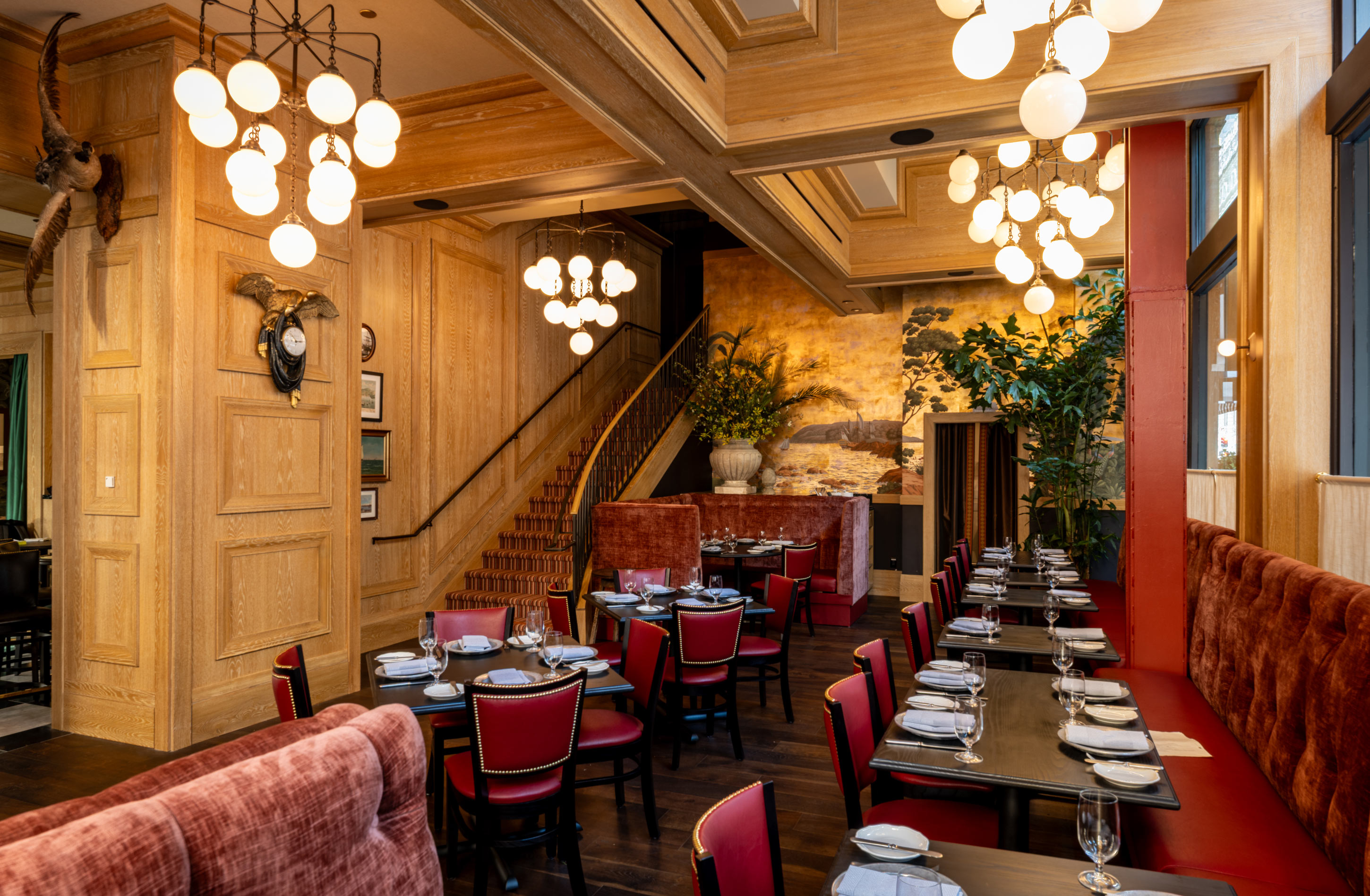
Every pizzeria owner knows the dinner rush dilemma: phones ringing off the hook while staff scramble to serve in-house customers, prep orders, and manage the chaos of peak service. The result? Missed calls, lost orders, and frustrated customers who take their business elsewhere. Recent industry data reveals that 43% of restaurant calls go unanswered, representing a massive revenue leak that most pizzeria owners can't afford to ignore (Smith AI vs Loman AI).
The stakes are higher than many realize. More than two-thirds (69%) of Americans say they're likely to give up on going to a restaurant if no one answers the phone (Hostie AI). For pizzerias operating on thin margins, every missed call during prime dinner hours represents lost revenue that could make the difference between a profitable month and a struggling one.
Enter AI phone agents—the game-changing technology that's helping pizzerias recapture those lost calls and boost revenue by significant margins. Local's Pub & Pizzeria saw their online sales surge 132% after deploying AI answering technology, proving that the right solution can transform missed opportunities into measurable growth. This comprehensive analysis explores how AI phone agents are revolutionizing pizzeria operations during the critical dinner rush period.
Pizzeria operations face unique challenges during peak hours. Unlike fine dining establishments that can manage reservations and control seating flow, pizza shops must juggle walk-ins, phone orders, delivery coordination, and dine-in service simultaneously. The phones would ring constantly throughout service, creating an impossible situation where staff must choose between serving present customers and capturing new business (Hostie AI).
In-demand establishments receive between 800 and 1,000 calls per month, with the majority concentrated during dinner rush hours (Hostie AI). For a typical pizzeria, this translates to 15-20 calls per evening during peak periods—calls that often go unanswered when staff are overwhelmed with in-person service demands.
To understand the financial implications, consider a mid-sized pizzeria with average order values of $35 for phone orders. If 43% of calls go unanswered during dinner rush, and the pizzeria receives 18 calls per evening during peak hours, that's approximately 8 missed calls per night. Over a month, this represents 240 missed opportunities.
Assuming a 60% conversion rate for answered calls (industry standard for pizza orders), those missed calls translate to:
This calculation doesn't account for repeat customers, referrals, or the compound effect of customer dissatisfaction. The actual impact is likely much higher, especially considering that 63% of Americans say calling is their preferred way to contact a restaurant (Hostie AI).
The restaurant industry faces persistent staffing challenges, with positions paying as little as $17 per hour making it difficult to attract and retain quality employees. Humans typically don't stay long in these positions, creating constant turnover that disrupts service consistency (Hostie AI). This staffing instability makes it even more critical to have reliable systems in place to handle customer communications.
AI phone agents represent a sophisticated blend of natural language processing, machine learning, and restaurant-specific programming. These systems can handle generic questions about the restaurant's dress code, cuisine, seating arrangements, and food allergy policies, freeing up human staff to focus on food preparation and in-person service (Hostie AI).
The technology has evolved rapidly, with the global AI voice generators market projected to reach $21,754.8 million by 2030, growing at a CAGR of 29.6% from 2024 to 2030 (Grand View Research). This growth is driven by technological advancements in AI and natural language processing that make voice interactions increasingly natural and effective.
Modern AI phone agents designed for restaurants offer capabilities that go far beyond simple call answering. Voice AI platforms can boost same-store sales and average ticket with dynamic upsell and greater order capture (ConverseNow). These systems can:
The sophistication of these systems means they can handle the majority of routine customer interactions that typically consume staff time during busy periods.
Many AI phone systems can speak multiple languages, making them particularly valuable for pizzerias in diverse communities (Hostie AI). This capability expands the potential customer base and ensures that language barriers don't result in lost orders.
Local's Pub & Pizzeria's success story demonstrates the transformative potential of AI phone agents when properly implemented. The establishment deployed AI answering technology as part of a comprehensive customer communication strategy, focusing on capturing and converting phone inquiries that previously went unanswered.
The 132% increase in online sales following AI implementation suggests that the technology didn't just prevent lost calls—it actively drove additional revenue through improved customer experience and order capture efficiency. This dramatic improvement indicates that the AI system was able to:
The success at Local's Pub & Pizzeria likely stemmed from several critical implementation factors:
Comprehensive Training Data: The AI system was probably trained on the restaurant's specific menu, pricing, policies, and common customer questions, ensuring accurate and helpful responses.
Integration with Existing Systems: Seamless integration with the restaurant's POS system and online ordering platform enabled smooth order processing and payment handling.
Staff Training and Buy-In: Human staff were likely trained to work alongside the AI system, handling complex requests while the AI managed routine inquiries.
Continuous Optimization: Regular monitoring and adjustment of the AI system's responses and capabilities based on customer feedback and interaction patterns.
While the 132% sales increase is impressive, the true value of AI phone agents extends beyond immediate revenue gains. The technology likely improved:
To model the potential revenue impact for a typical pizzeria, let's establish baseline assumptions based on industry data and the 43% missed call statistic:
Typical Pizzeria Metrics:
Current State (Without AI):
Projected State (With AI):
The basic calculation above represents conservative estimates. AI systems often achieve higher conversion rates than human staff during busy periods due to:
Assuming a 70% conversion rate with AI (compared to 60% with human-only service), the revenue impact increases:
Most AI phone agent services operate on subscription models with pricing tiers that unlock additional features (Hostie AI). Assuming a monthly cost of $300-500 for a comprehensive AI phone system:
Conservative Scenario:
Optimistic Scenario:
These calculations demonstrate that even conservative estimates show exceptional return on investment, making AI phone agents a financially compelling solution for most pizzerias.
The AI phone agent market has seen "unbelievable, crazy growth" according to industry experts, creating numerous options for restaurant owners (Hostie AI). When selecting a system, pizzerias should prioritize:
Restaurant-Specific Features:
Scalability and Flexibility:
Reliability and Support:
Successful AI phone agent implementation requires careful planning and execution. Hostie AI, which launched primarily in the Bay Area in 2024, has worked with early clients to refine implementation processes through trial and error testing (Hostie AI).
Pre-Implementation Phase:
Launch Phase:
Optimization Phase:
As a restaurant owner myself, I know how difficult it can be to balance being on the floor during peak service hours while managing inbound calls, texts and emails from potential guests (Hostie AI). This challenge makes staff buy-in crucial for successful AI implementation.
Training Focus Areas:
The goal is to position AI as a tool that enhances rather than replaces human staff, allowing them to focus on delivering the best hospitality experience to in-person guests while technology handles routine communications (Hostie AI).
The AI in hospitality market demonstrates explosive growth potential, with market size valued at $16.33 billion in 2023 and projected to reach $70.32 billion by 2031, growing at a CAGR of 20.36% (Kings Research). This growth is driven by the demand for improved customer experience, which is a primary driver propelling the adoption of AI technologies in the hospitality industry.
For pizzerias specifically, the adoption of AI phone agents represents part of a broader digital transformation trend. The technology addresses multiple pain points simultaneously:
Consumer attitudes toward AI in restaurant interactions are increasingly positive. Research shows that 89% of Americans would be open to using an AI agent for tasks related to interacting with a restaurant (Hostie AI). This high acceptance rate suggests that customer resistance is unlikely to be a significant barrier to implementation.
The preference for phone communication remains strong, with 63% of Americans saying calling is their preferred way to contact a restaurant (Hostie AI). This preference, combined with the consequences of unanswered calls, creates a compelling case for AI phone agents as a customer retention tool.
AI voice technology continues to evolve rapidly, with improvements in natural language processing making interactions increasingly sophisticated. The AI Voice Generator Market is projected to reach $6.4 billion by 2033, with North America holding a 37.9% market share (EIN News).
Future developments likely to benefit pizzerias include:
Pizzerias implementing AI phone agents gain significant competitive advantages in their local markets. While competitors struggle with missed calls and inconsistent service during peak hours, AI-enabled establishments provide:
Consistent Availability: Customers can always reach the restaurant, regardless of how busy the kitchen or dining room becomes.
Professional Service: AI agents don't get flustered, tired, or overwhelmed, maintaining service quality even during the busiest periods.
Faster Response Times: AI systems can handle multiple calls simultaneously, reducing wait times and improving customer satisfaction.
Accurate Order Taking: Standardized processes reduce errors and ensure customers receive exactly what they ordered.
Pizzerias can leverage AI phone agents as a marketing differentiator, positioning themselves as:
Technology-Forward: Appealing to customers who value innovation and modern service approaches.
Reliability-Focused: Emphasizing consistent availability and service quality as key brand attributes.
Customer-Centric: Demonstrating commitment to customer convenience and satisfaction through always-available service.
Efficiency-Driven: Highlighting faster service and reduced wait times as competitive advantages.
The improved customer experience enabled by AI phone agents contributes to stronger customer loyalty and repeat business. When customers know they can always reach the restaurant and receive consistent, professional service, they're more likely to:
Successful AI phone agent implementation requires ongoing monitoring and optimization. Pizzerias should track several key metrics:
Call Management Metrics:
Revenue Metrics:
Customer Experience Metrics:
Operational Metrics:
AI systems improve through ongoing optimization and learning. Pizzerias should implement regular review processes:
Weekly Reviews:
Monthly Analysis:
Quarterly Strategic Reviews:
Pizzeria owners often express concerns about AI phone agent implementation. Addressing these concerns proactively ensures smoother adoption:
"Will customers accept AI service?"
With 89% of Americans open to using AI agents for restaurant interactions, customer acceptance is generally high (Hostie AI). The key is ensuring the AI provides value through faster service and consistent availability.
"What about complex orders or special requests?"
Modern AI systems handle most standard orders effectively, with protocols for escalating complex requests to human staff. The goal is handling 80-90% of routine calls automatically while ensuring smooth handoffs for exceptional cases.
"Will this replace my staff?"
AI phone agents complement rather than replace human staff. They free up employees to focus on food preparation, in-person service, and complex customer needs that require human judgment and creativity.
"What if the system fails during busy periods?"
Reliable AI systems include backup protocols and failover mechanisms. Additionally, staff can always take over call handling if technical issues arise.
Successful implementation requires addressing technical integration challenges:
POS System Compatibility: Ensuring seamless order transfer from AI system to kitchen and payment processing.
Menu Synchronization: Keeping AI system updated with current menu items, prices, and availability.
Payment Security: Implementing secure payment processing that meets industry standards and customer expectations.
Data Management: Establishing proper data collection, storage, and analysis procedures for ongoing optimization.
The rapid advancement of AI technology promises even more sophisticated capabilities for pizzerias in the near future. Conversational AI platforms are evolving to transform calls into opportunities by directing guests to online ordering or reservation booking (Slang AI).
Future developments may include:
Predictive Ordering: AI systems that learn customer preferences and suggest orders based on past behavior, weather patterns, and local events.
Dynamic Pricing: Real-time price optimization based on demand, inventory levels, and competitive factors.
Integrated Marketing: AI-driven promotional campaigns that target specific customer segments with personalized offers.
Supply Chain Integration: AI systems that coordinate ordering, inventory management, and delivery logistics for optimal efficiency.
Beyond phone answering, AI technology is expanding into other restaurant operations areas. AI applications in restaurants include AI-powered chatbots for personalized ordering, predictive analytics for inventory management, and algorithms for personalized marketing (AppFront AI).
Pizzerias implementing AI phone agents today position themselves to adopt additional AI capabilities as they become available, creating a foundation for comprehensive digital transformation.
The restaurant industry is experiencing fundamental changes driven by AI adoption. AI can automate tasks such as inventory management, food preparation, and cleaning, helping streamline operations and reduce costs (AppFront AI).
Pizzerias that embrace AI phone agents now will be better positioned to adapt to future industry changes and maintain competitive advantages in an increasingly technology-driven market.
The evidence is clear: AI phone agents represent a transformative solution for pizzerias struggling with missed calls during dinner rush periods. With 43% of restaurant calls going unanswered and 69% of customers willing to abandon restaurants that don't answer their phones, the revenue impact of missed calls is too significant to ignore (Smith AI vs Loman AI) (Hostie AI).
Local's Pub & Pizzeria's 132% sales increase demonstrates the transformative potential of properly implemented AI phone technology. For a typical pizzeria, recapturing missed calls through AI agents can generate $60,000-80,000 in additional annual revenue while improving customer satisfaction and operational efficiency.
The technology has matured to the point where 89% of Americans are open to using AI agents for restaurant interactions, removing customer acceptance as a barrier to implementation (Hostie AI). With the AI in hospitality market projected to reach $70.32 billion by 2031, early adopters will be well-positioned to capitalize on this growth.
How much can AI phone agents reduce missed calls for pizzerias?
AI phone agents can reduce missed calls by up to 43% for pizzerias, according to recent industry data. This significant reduction helps capture more orders during peak hours when staff are overwhelmed with in-house customers and food preparation tasks.
What happens when restaurants don't answer their phones?
Research shows that over two-thirds of Americans would ditch restaurants that don't answer the phone, making missed calls a critical revenue leak. When customers can't reach a restaurant by phone, they typically take their business to competitors who are more accessible.
How do AI phone agents handle pizza orders during busy periods?
AI phone agents use conversational AI to take orders 24/7, even during the busiest dinner rush periods. They can process multiple calls simultaneously, handle upselling opportunities, and seamlessly integrate with existing POS systems to ensure accurate order processing.
What are the main benefits of AI phone agents for pizzeria operations?
AI phone agents provide several key benefits including reduced labor costs, increased order capture rates, improved customer satisfaction through faster response times, and the ability to handle multiple calls simultaneously. They also free up staff to focus on food preparation and in-house customer service.
How much is the AI voice technology market expected to grow?
The global AI voice generator market is projected to reach $21.75 billion by 2030, growing at a CAGR of 29.6% from 2024 to 2030. This rapid growth reflects increasing adoption across industries, particularly in hospitality and restaurant sectors seeking to improve customer experience.
Can AI phone agents integrate with existing restaurant management systems?
Yes, modern AI phone agents like those offered by platforms such as ConverseNow and Slang.ai can integrate with existing POS systems, property management systems, and reservation platforms. This integration ensures seamless order processing and real-time inventory management without disrupting current operations.
RELATED


